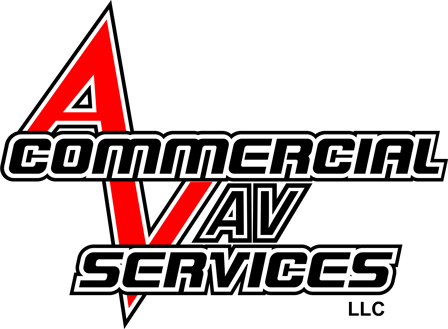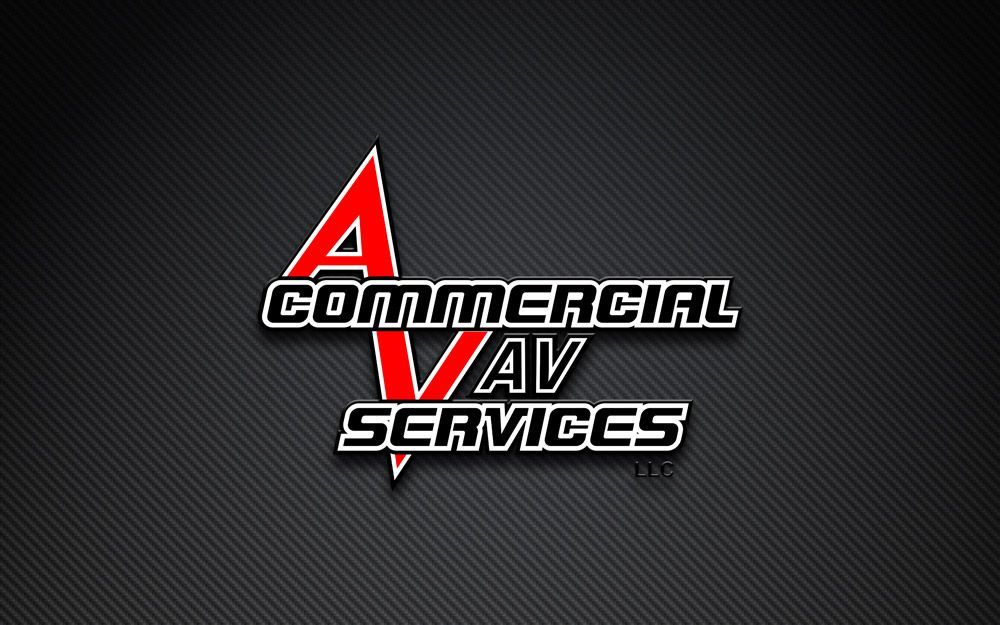Blog & News
2024 Guide: The Challenges of Wiring Large-Scale Commercial Spaces and How to Overcome Them
Home » Commercial Audio Video Tips » Commercial Audio Video Wiring Installation » Wiring Large-Scale Commercial Spaces
Table of Contents:
- Understanding the Complexity of Large-Scale Commercial Spaces
- Navigating System Interference
- Managing Logistical Challenges
- Innovative Solutions for Efficient Wiring
- Ensuring Successful AV Installation
Understanding the Complexity of Large-Scale Commercial Spaces
Installing audio/video wiring in large-scale commercial spaces can be a daunting task. These spaces often have complex layouts, multiple floors, and many rooms, making it challenging to plan and execute an efficient wiring system. To ensure a successful project, it’s important to understand the unique requirements of each space and anticipate potential problems. Effective planning is crucial to avoid costly mistakes and delays. This section will explore the key factors that need to be considered when wiring large commercial spaces. From evaluating architectural layouts to identifying key installation zones and planning for future scalability, each step plays a vital role in the overall success of the project.
Evaluating Architectural Layouts
Evaluating the architectural layout is the first step in wiring a large commercial space. This involves studying the blueprints and floor plans to understand the physical structure of the building. Knowing the locations of walls, columns, and other structural elements helps in planning the pathways for cables and wiring. It’s also important to identify any obstacles that might hinder the installation process. This could include things like firewalls, elevators, or large pieces of equipment. By thoroughly evaluating the layout, you can create a more accurate and efficient wiring plan that meets the needs of the space.
Identifying Key Installation Zones
After understanding the architectural layout, the next step is to identify key installation zones. These are areas where wiring and equipment will be concentrated, such as server rooms, communication hubs, and control centers. It’s important to strategically place these zones to minimize the length of cable runs and reduce signal loss. Additionally, these zones should be easily accessible for maintenance and future upgrades. Properly identifying and planning these key zones can help streamline the installation process and ensure a more reliable and efficient system.
Planning for Future Scalability
Planning for future scalability is an essential aspect of wiring large commercial spaces. Technology and business needs can change rapidly, so it’s important to design a wiring system that can adapt to these changes. This means leaving enough space in cable trays and conduits for additional cables, as well as using modular components that can be easily upgraded or replaced. Future-proofing the wiring system can save time and money in the long run, as it reduces the need for major overhauls and ensures that the system can keep up with technological advancements.
Partnering with Experts for Optimal Results
Navigating the complexities of wiring large-scale commercial spaces in Phoenix can be daunting, making partnering with a reputable Commercial Audio/Video Services Company like Commercial AV Services invaluable. These experts ensure every aspect of the installation is meticulously planned and executed. A professional AV services company can streamline the process, mitigate risks, and enhance overall project efficiency. By choosing to work with seasoned professionals, businesses can achieve superior outcomes, ensuring their AV systems are reliable, scalable, and tailored to their specific needs.
Navigating System Interference
Wiring large-scale commercial spaces comes with the challenge of system interference. Interference can disrupt the signals transmitted through cables, leading to poor performance or even system failures. It is crucial to recognize the sources of interference and implement techniques to minimize their impact. This section will discuss how to identify different types of interference, effective shielding and grounding methods, and the use of signal boosters and repeaters to maintain strong and reliable connections.
Recognizing Sources of Interference
Recognizing sources of interference is the first step in addressing this challenge. Interference can come from various sources, including electrical equipment, wireless devices, and even the building materials themselves. For example, fluorescent lights, HVAC systems, and motors can create electrical noise that interferes with signal transmission. Wireless devices such as Wi-Fi routers and cell phones can also cause electromagnetic interference. By identifying these potential sources, you can take proactive steps to mitigate their impact on your wiring system.
Shielding and Grounding Techniques
Shielding and grounding are essential techniques for protecting against interference. Shielding involves encasing cables in a conductive material that blocks unwanted signals. This is particularly important for sensitive data cables like Ethernet or coaxial cables. Grounding, on the other hand, involves connecting the cable shield or the equipment to the earth, which helps to dissipate electrical noise. Proper grounding techniques are crucial for safety and performance, as they prevent buildup of electrical charges that can interfere with signals. Implementing these techniques can greatly reduce the risk of interference and ensure a more reliable system.
Utilizing Signal Boosters and Repeaters
Signal boosters and repeaters are valuable tools for maintaining strong signal strength over long distances. In large commercial spaces, cables often need to run over considerable distances, which can lead to signal degradation. Signal boosters amplify the signal, making it stronger and clearer. Repeaters, on the other hand, receive the signal and retransmit it, effectively extending the range of the cable. These devices are particularly useful in areas where interference is high or where long cable runs are necessary. Using signal boosters and repeaters can help maintain the integrity of your wiring system and ensure consistent performance throughout the space.
Key Takeaway:
Effectively managing system interference is essential to maintaining reliable and strong signal transmission in large-scale commercial wiring projects.
Managing Logistical Challenges
Managing logistical challenges is a critical aspect of wiring large-scale commercial spaces. These projects often require coordination with various trades, strict scheduling, and adherence to numerous regulations. Without proper logistical planning, the project can face significant delays and increased costs. This section will discuss the importance of coordinating with other trades, the need for effective scheduling and time management, and the necessity of ensuring compliance with regulations to keep the project on track.
Coordinating with Other Trades
Coordinating with other trades is essential for a smooth wiring installation. Electricians, HVAC technicians, plumbers, and construction workers all need to work together to ensure that their systems do not interfere with one another. For example, electricians need to know where HVAC ducts will be installed to avoid running cables through those areas. Regular meetings and clear communication channels are crucial for this coordination. By working closely with other trades, you can avoid conflicts, reduce downtime, and ensure that the project progresses smoothly.
Scheduling and Time Management
Scheduling and time management are vital to keeping a large-scale wiring project on track. These projects often have tight deadlines, and any delays can have a ripple effect on the entire timeline. Creating a detailed project schedule that outlines all tasks and milestones is essential. It’s also important to build in buffer time for unexpected delays and to regularly review and adjust the schedule as needed. Effective time management helps ensure that each phase of the project is completed on time and that resources are used efficiently.
Ensuring Compliance with Regulations
Ensuring compliance with regulations is another key logistical challenge. Wiring installations must adhere to various local, state, and federal regulations, including building codes, safety standards, and industry-specific guidelines. Non-compliance can lead to fines, project delays, and even legal issues. It’s important to stay updated on relevant regulations and to conduct regular inspections to ensure compliance. Working with experienced professionals who are familiar with these regulations can also help ensure that your project meets all legal requirements.
Key Takeaway:
Effective logistical planning, including coordination with other trades, strict scheduling, and regulatory compliance, is crucial to the successful completion of large-scale commercial wiring projects.
Innovative Solutions for Efficient Wiring
Innovative solutions are essential for efficient wiring in large-scale commercial spaces. With advancements in technology, there are now various tools and techniques available to streamline the wiring process and improve overall efficiency. This section will explore the benefits of using advanced cable management systems, implementing wireless technologies, and leveraging pre-fabricated wiring kits to enhance the efficiency and effectiveness of wiring projects.
Using Advanced Cable Management Systems
Advanced cable management systems play a crucial role in organizing and protecting wiring installations. These systems include cable trays, conduits, and raceways designed to keep cables neatly arranged and easily accessible. Proper cable management not only improves the aesthetics of the installation but also makes maintenance and troubleshooting much easier. Additionally, these systems help protect cables from damage and reduce the risk of signal interference. By investing in advanced cable management solutions, you can enhance the overall efficiency and longevity of your wiring installation.
Implementing Wireless Technologies
Implementing wireless technologies can significantly reduce the need for extensive cabling in large commercial spaces. Wireless solutions, such as Wi-Fi, Bluetooth, and Zigbee, can be used for various applications, including data transmission, communication, and control systems. These technologies eliminate the need for physical cables, making installations faster and more flexible. However, it’s important to ensure that wireless systems are properly configured and secured to prevent interference and unauthorized access. By integrating wireless technologies, you can create a more efficient and adaptable wiring solution.
Leveraging Pre-Fabricated Wiring Kits
Leveraging pre-fabricated wiring kits is another innovative approach to streamline wiring projects. These kits come with pre-cut and pre-labeled cables, connectors, and other components, making the installation process faster and more straightforward. Pre-fabricated kits are particularly useful in repetitive and standardized installations, as they reduce the need for on-site cutting and labeling. This not only saves time but also minimizes the risk of errors and ensures consistency across the project. By using pre-fabricated wiring kits, you can improve efficiency and reduce installation time.
Key Takeaway:
Incorporating advanced cable management systems, wireless technologies, and pre-fabricated wiring kits can significantly enhance the efficiency and effectiveness of wiring large-scale commercial spaces.
Ensuring Successful AV Installation
Ensuring a successful AV (audiovisual) installation in large-scale commercial spaces involves thorough planning, rigorous testing, and ongoing support. AV systems are integral to many commercial environments, from conference rooms to public announcement systems, and their reliability is crucial. This section will cover the importance of conducting thorough testing and quality assurance, training and supporting on-site personnel, and maintaining and upgrading systems to ensure long-term success.
Conducting Thorough Testing and Quality Assurance
Conducting thorough testing and quality assurance is critical for the successful installation of AV systems. This involves checking all connections, ensuring that signals are transmitted without interference, and verifying that all equipment functions correctly. It’s important to perform these tests under various conditions to ensure the system can handle different scenarios. Additionally, documenting the testing process and results helps identify any issues and provides a reference for future maintenance. By investing time in comprehensive testing, potential problems can be prevented, ensuring that the AV system operates smoothly from day one.
Training and Supporting On-Site Personnel
Training and supporting on-site personnel is essential to ensure that the AV system is used correctly and maintained properly. Providing thorough training sessions for staff who will operate and manage the AV system helps them understand its capabilities and limitations. This training should cover basic troubleshooting techniques, regular maintenance procedures, and how to make simple adjustments. Ongoing support, such as a helpdesk or regular check-ins, can also help address any issues that arise. Well-trained and supported personnel are key to the long-term success of the AV installation.
Maintaining and Upgrading Systems
Maintaining and upgrading AV systems is crucial to keep them functioning optimally and to extend their lifespan. Regular maintenance tasks, such as cleaning equipment, checking connections, and updating software, help prevent issues before they become major problems. Additionally, planning for periodic upgrades ensures that the system remains up-to-date with the latest technology and continues to meet the evolving needs of the space. Keeping a detailed maintenance log can help track these activities and plan for future upgrades. By prioritizing maintenance and upgrades, the AV system remains reliable and effective.
Key Takeaway:
Thorough testing, proper training and support for personnel, and regular maintenance and upgrades are essential for ensuring the long-term success of AV installations in large-scale operations.
Frequently Asked Questions (FAQs)
Contact Us
Commercial AV Services
2432 W Peoria Ave Suite 1204 Phoenix, AZ 85029
(602) 626-5800















